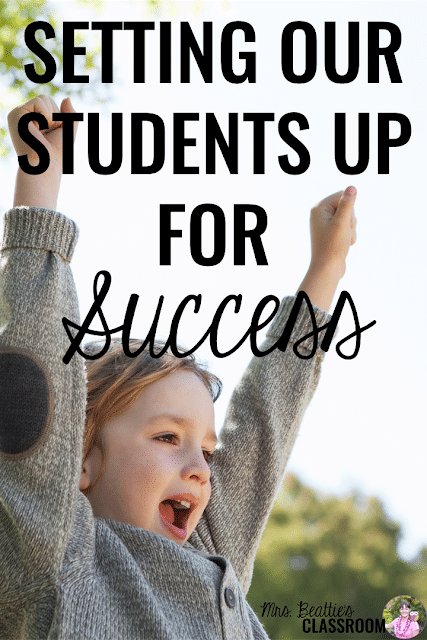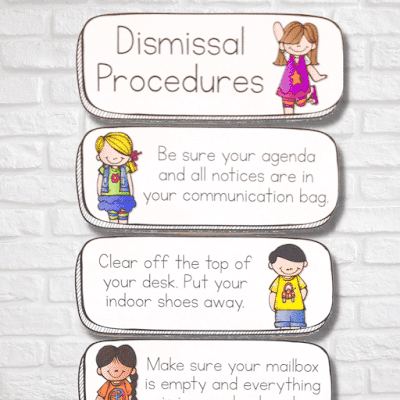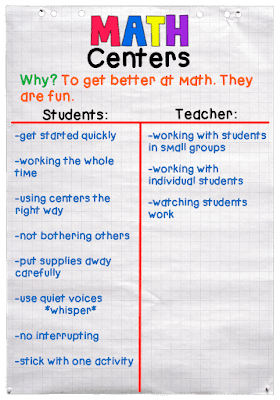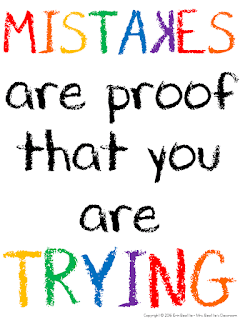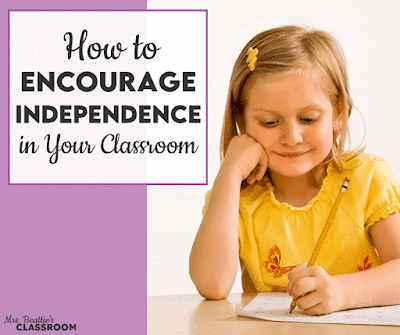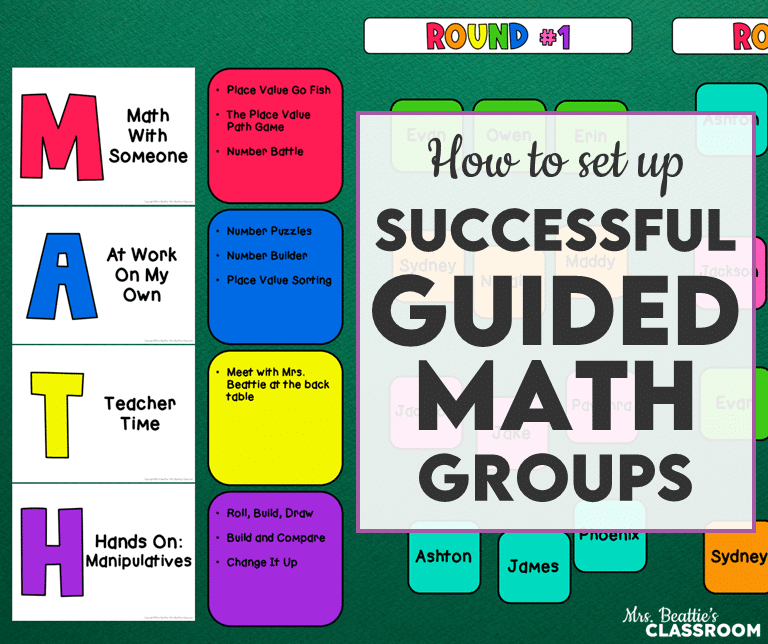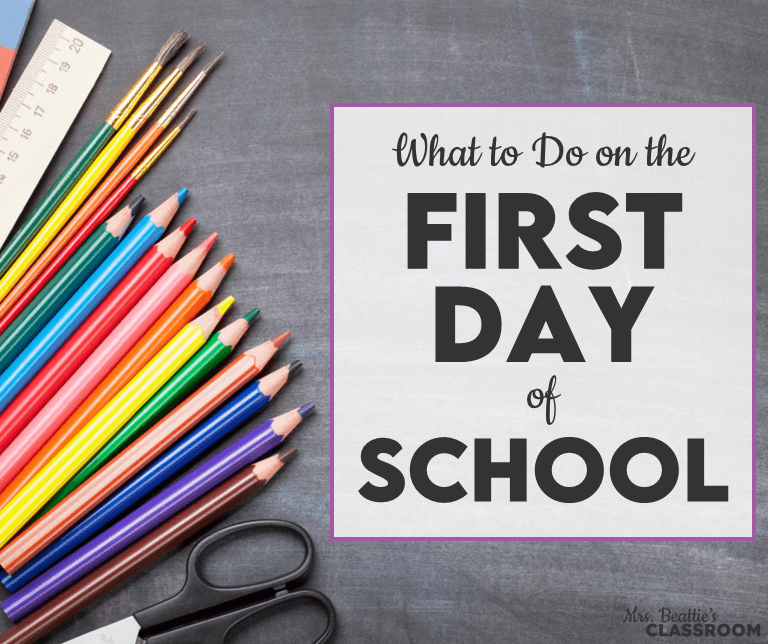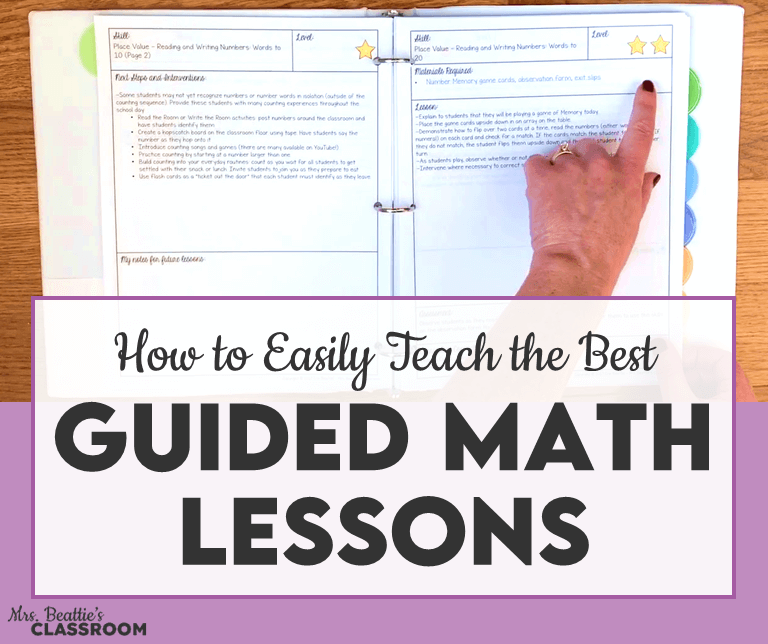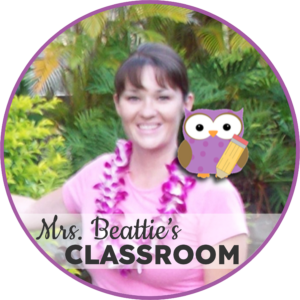Students arrive in our classrooms with various abilities, needs, histories, health issues, and attitudes, and sometimes, parents don’t keep us completely in the loop. That’s totally okay—families are certainly entitled to their privacy—but it can make our job tougher. That’s why the best teachers (I’m talking about YOU!) put certain things in place daily to set ALL their students up for success.
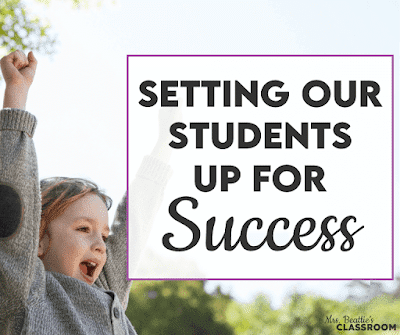
Get To Know Your Students
This should go without saying: Get to know everything you can about your students. Read their student records. Talk to former teachers. Send a parent survey home at the beginning of the school year. Talk to your students, and really listen.
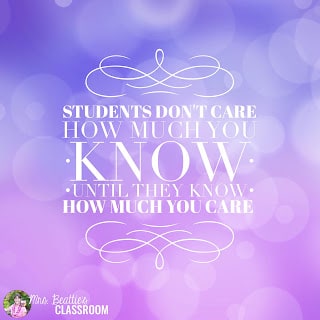
Two Words: Structure And Routine
Children thrive on structure and routine—and, let’s face it, so do many adults! Make the things you do every day simple for your children by keeping routines consistent and predictable. Post expectations and keep a daily agenda on the wall, and do these things the same way every single day.
Your students will quickly develop a comfort level with the way your classroom day plays out, and this eliminates one layer that can create anxiety for children. Having a clear structure and routine for every school day makes things much easier for your Guest Teachers!
Clear Expectations For Behavior
Communicate what you expect from your students in a clear, concise way. Your students should know exactly what is and is not appropriate to do in your classroom from day one.
Am I supposed to do this now? Where should I be at this time? There should be no guessing for them.
Posting these expectations, even for the first few weeks and months of school, is very helpful for students and can help them to feel at ease in your classroom.
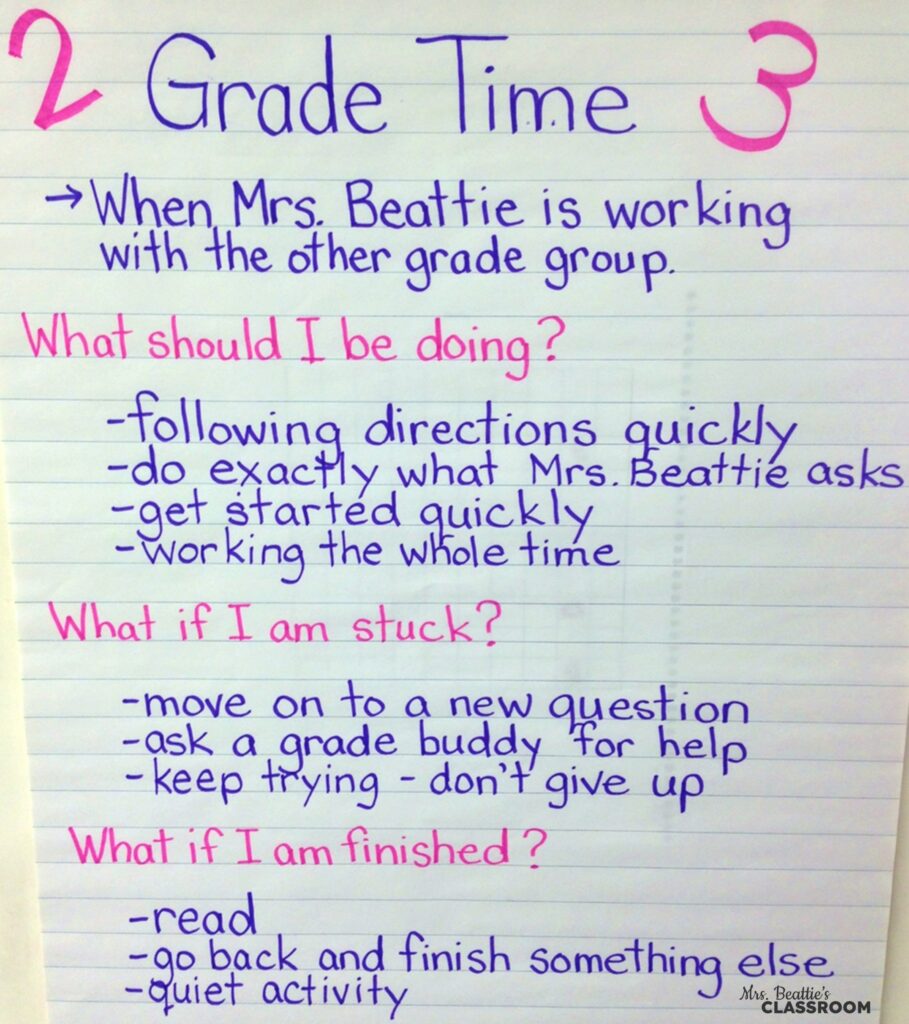
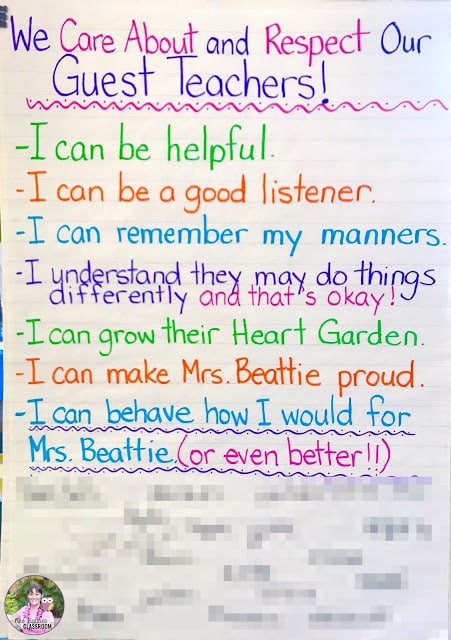
Consistent Follow-Through
Once your classroom expectations and consequences are established, you must STICK TO THEM!! This may be THE most important thing to remember! I was allowed to do this yesterday, so why is it not okay today? Kids shouldn’t ever feel anxious because they don’t know what’s coming, and you can’t expect them to make good choices if you’ve not made it clear what those good choices look like!
For example, if you want students to raise their hands to share ideas during whole-class activities, don’t include those who blurt in the conversation: “Thank you for raising your hand, Jake! What would you like to share?” Focus on the students who are raising their hands, and the others will quickly get the picture! If you allow the blurting student to continue sharing you send the message that the interruption was okay and that it really doesn’t matter if they raise their hand or not.
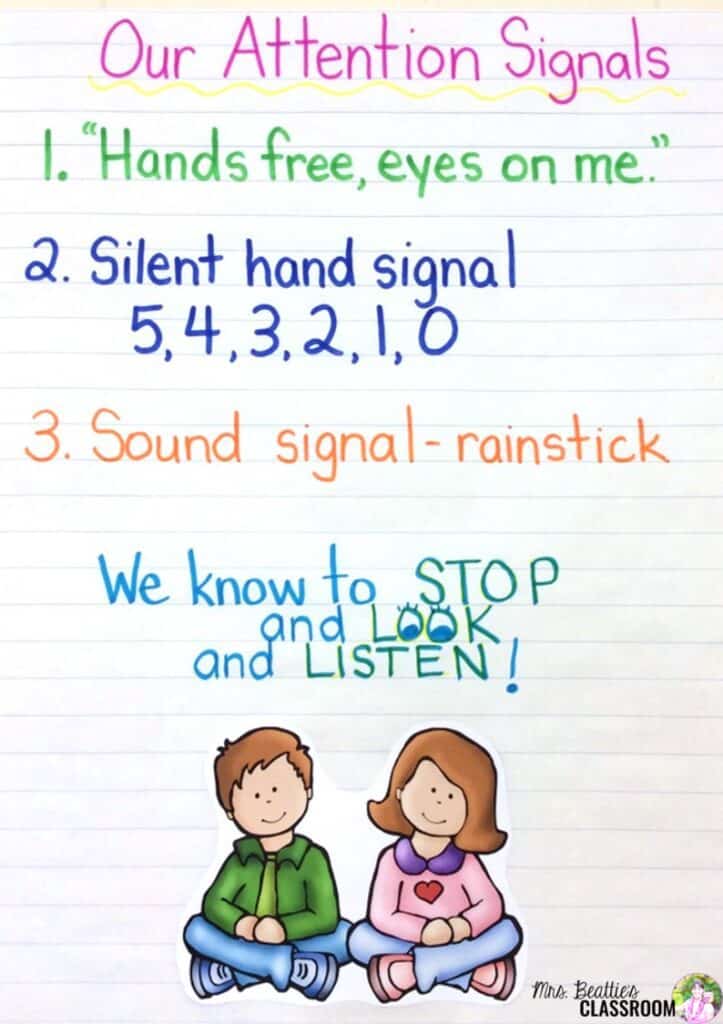
Meet Students Where They Are
Be aware of any special education needs your students may have early on, and get to know any IEPs. Your lessons and activities MUST be differentiated, or your struggling students will shut down. Nothing will create a sense of defeat more quickly than having a task placed in front of you that you can’t read or don’t understand. Find out about the resources and technologies you have available to you in your school and make use of them!
Some easy ways to differentiate for your students include:
- flexible seating – allowing students to work where they are most comfortable
- creating differentiated word lists so each student (or group of students) can focus on activities using words that are appropriate for them (try these out for free!)
- providing activities at multiple reading levels – keeping them similar in look and style creates privacy for struggling students as well (no “babyish” looking tasks)
- providing scaffolded worksheets for reducing copying or unnecessary writing
- breaking tasks down into smaller chunks
- providing visual cues
- allowing for choice where possible
- having students work in pairs or small groups
- using highlighting or color-coding strategies to direct student attention to key points
- providing computers or tablets for students to complete work (check out my post about the amazing Seesaw app HERE!)
Create A Safe Environment
Creating a culture of respect where mistakes are okay makes your classroom a safe place for your students to take risks. Let them see you make mistakes. Talk to them about things that are difficult for you. Do not allow students to laugh at or ridicule someone for being wrong. Model a growth mindset and use the language of it every day. Remember the power of YET:
Student: “I can’t do it.”
You: “That’s not true. You just can’t do it YET!”
I hope you’re inspired to take action to set your students up for success in your classroom!
You might also be interested in the ideas I’ve shared in these blog posts:
Pin this post to find it easily for next school year:
